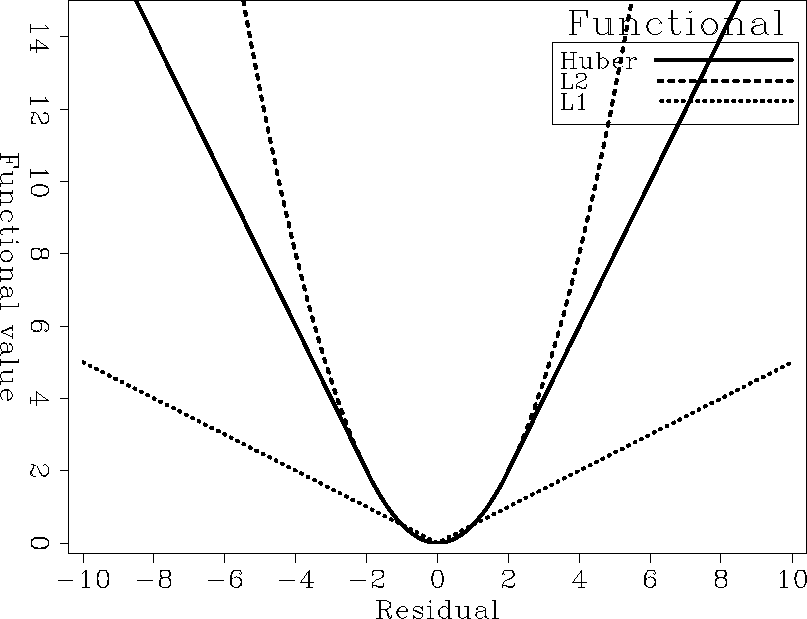




Next: REFERENCES
Up: HUBER VELOCITY SPACE MULTIPLE
Previous: HUBER VELOCITY SPACE MULTIPLE
To get a better ( ) model we decided to replace the linear iterative
solver used by Lumley et al. (1994) with the Fletcher-Reeves non-linear
conjugate gradient conditions Polak (1997) and the Dennis-Schnabel
line search method Dennis and Schnabel (1983).
We replaced the L2 function, with a Huber functional Huber (1973)
that is
less sensitive to large outliers.
The Huber
functional is L2 until some cutoff value and then smoothly switches
to L1 (Figure 5).
The idea is compromise between the convergence speed of
L2 and the less sensitive nature to outliers with the L1.
Guitton and Symes1999 showed that the Huber
functional does a better job of localizing energy in (t,v) space. For
multiples this mean that the primary and multiple trains are
better separated.
) model we decided to replace the linear iterative
solver used by Lumley et al. (1994) with the Fletcher-Reeves non-linear
conjugate gradient conditions Polak (1997) and the Dennis-Schnabel
line search method Dennis and Schnabel (1983).
We replaced the L2 function, with a Huber functional Huber (1973)
that is
less sensitive to large outliers.
The Huber
functional is L2 until some cutoff value and then smoothly switches
to L1 (Figure 5).
The idea is compromise between the convergence speed of
L2 and the less sensitive nature to outliers with the L1.
Guitton and Symes1999 showed that the Huber
functional does a better job of localizing energy in (t,v) space. For
multiples this mean that the primary and multiple trains are
better separated.
huber
Figure 5 The L2, Huber, and L1 functionals.
|
|  |





To show the advantage of the Huber method over a straight L2 we
took a multiple contaminated CMP gather, Figure 6, and iterated
on fitting goals (5).
Figure 7 shows the envelope of the
( ) representation of both the Huber and L2 approach. Note
how the Huber result shows a more compact representation of the
primary and multiple trains.
) representation of both the Huber and L2 approach. Note
how the Huber result shows a more compact representation of the
primary and multiple trains.
mobil
Figure 6 A multiple infested gather from the Mobil AVO dataset.
|
|  |




 compare
compare
Figure 7 The envelope of the tau-velocity space representation
of the Mobil AVO gather (Figure 6) using
both an L2, left, and a Huber, right, functional.
Note how the Huber gather shows
more energy and better isolation of the primary train. Further, the L2
approach show significantly more energy at high, unreasonable, velocities.










Next: REFERENCES
Up: HUBER VELOCITY SPACE MULTIPLE
Previous: HUBER VELOCITY SPACE MULTIPLE
Stanford Exploration Project
10/25/1999


![]() ) representation of both the Huber and L2 approach. Note
how the Huber result shows a more compact representation of the
primary and multiple trains.
) representation of both the Huber and L2 approach. Note
how the Huber result shows a more compact representation of the
primary and multiple trains.

